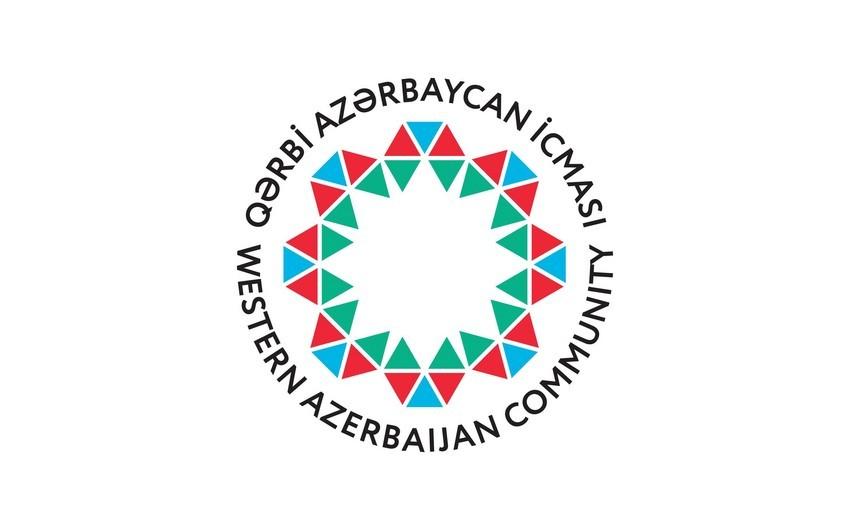Repatriation to Karabakh, Western Azerbaijan key to long-term stability in South Caucasus Article by Bulgarian media
The Bulgarian news outlet Fakti.bg has published an article by Milena Bogdanova, addressing the return of former internally displaced persons (IDPs) to Karabakh and the potential for Azerbaijanis to return to Western Azerbaijan. Caliber.Az offers its readers an analysed version of the piece.
The article delves into the difficult and ongoing situation of displaced Azerbaijanis, focusing particularly on the challenges surrounding their potential repatriation to both Nagorno-Karabakh and the broader region of Western Azerbaijan (modern-day Armenia). The piece examines not only the emotional and historical context of displacement but also the geopolitical, humanitarian, and technical obstacles that hinder their return, providing a comprehensive analysis of the multifaceted issues involved.
The article begins with a reflection on the universal concept of home, emphasizing that no matter how beautiful or comfortable one’s surroundings may be, the bond to one’s homeland is irreplaceable. This emotional appeal resonates deeply with the displaced Azerbaijani people who, after decades of displacement, continue to hold on to the hope of returning to their ancestral lands.
The psychological trauma of displacement, caused by decades of conflict, is one of the core elements explored in the article. These refugees’ attachment to their homeland is unshakable, despite the significant challenges they face in the wake of their forced departure.
The article touches upon the devastating human cost of the 30-year conflict between Armenia and Azerbaijan, which led to the displacement of over one million ethnic Azerbaijanis. This displacement included not only those from Nagorno-Karabakh but also from the seven surrounding regions in Azerbaijan that were occupied by Armenian forces during the conflict.
The article paints a grim picture of the living conditions faced by the displaced—living in tent camps and abandoned railway cars, with little access to basic necessities. The impact of these harsh conditions on their physical and mental health is profound, as many endured freezing winters and scorching summers.
However, the article also notes the positive role of Azerbaijan’s economic growth in improving the living standards of these displaced individuals, a sign of the country's commitment to addressing this humanitarian issue. Despite these efforts, the return of these displaced people remains an enormous challenge.
The piece sheds light on the complexities involved in repatriating both internally displaced persons (IDPs) and refugees. One of the most significant hurdles is the extensive damage to homes and infrastructure in the formerly occupied territories. These areas, having been under Armenian control for nearly three decades, were left in ruins, with residential buildings and public facilities looted and destroyed.
Additionally, the land is polluted with landmines—nearly 1.5 million anti-personnel mines, where demining measures require enormous financial and technical assistance, according to estimates. The demining process is both costly and technical, and despite efforts, only a fraction of the mines have been cleared in the four years since the ceasefire. The article highlights the lack of substantial international support for demining efforts, which is critical for ensuring the safety of returnees.

Furthermore, while the repatriation of internally displaced persons to Nagorno-Karabakh is more feasible due to Azerbaijan’s restoration of sovereignty over the area, the return of Azerbaijani refugees from Armenia is far more complicated. In particular, the article emphasizes the need for international attention and intervention to facilitate this process, as it requires not only political will from Armenia but also a broader regional framework for cooperation.
The article underscores the efforts of the Western Azerbaijan Community, which represents Azerbaijani refugees from Armenia, in reaching out to the Armenian government to request the return of these individuals as citizens of Armenia. However, Armenia has not responded to this appeal. The lack of a clear political solution from Armenia, despite Azerbaijan’s willingness to accept ethnic Armenians who voluntarily choose to leave Karabakh and take Azerbaijani citizenship, presents a major barrier to the return of these refugees.

One of the most important aspects of the article is its conclusion, which focuses on the role of repatriation in fostering peace and stability in the South Caucasus region. The article makes a compelling argument that the return of Azerbaijani refugees and internally displaced persons is not just a matter of justice for the victims of conflict but also a crucial step toward long-term peace and reconciliation.
The repatriation process could pave the way for greater cooperation and social interaction between ethnic Armenians and Azerbaijanis, especially if channels for peaceful coexistence are established in both Azerbaijan and Armenia. In this way, repatriation can serve as a bridge for future dialogue, helping to foster cultural exchange and mutual understanding between the two groups.
The return of displaced Azerbaijanis could also become a powerful symbol of the triumph of justice and the restoration of territorial integrity, which could inspire both nations to move beyond their historical grievances and seek common ground.
In sum, the article provides a thoughtful analysis of the challenges and opportunities surrounding the repatriation of Azerbaijani refugees and internally displaced persons. It emphasizes that the process, while fraught with political, humanitarian, and technical difficulties, could contribute significantly to the long-term peace and stability of the South Caucasus. The article calls for greater international engagement and cooperation to ensure that the displaced are able to return home safely and with dignity, and that the rebuilding of communities can begin in earnest.








